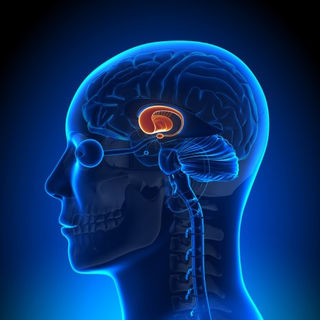Dopamine
Why Do Dopamine Levels Fluctuate During Migraines?
New research sheds light on migraine pain.
Posted April 13, 2017
Migraines are a leading cause of disability. Worldwide about 14.7 percent of people experience migraines. Migraines entail severe pain as well as increased sensitivity to usually non-painful stimuli in the environment, a phenomenon known as allodynia. Unlike the pain associated with inflammation, allodynia is thought to proffer no protective advantage or biologic utility.

Recent studies suggest that people with migraines experience brain changes in the basal ganglia and other brain regions. In the basal ganglia, the neurotransmitter dopamine helps modulate pain. In a recent study published this month in Neurology, DaSilva and other colleagues from the University of Michigan expand on these recent findings and discover that people with migraines experience fluctuations in dopamine levels. The researchers also explain the possible implications of their findings.
What Is Dopamine?
Dopamine is a monoamine neurotransmitter synthesized from the amino acid tyrosine. Through a series of enzymatic reactions, tyrosine is first converted to L-DOPA, then to dopamine, then to norepinephrine, and finally to epinephrine.
Dopamine can be either inhibitory or excitatory depending on which receptors are triggered. In the body, dopamine plays many roles, including in the following:
- cognition
- behavior
- sleep
- mood
- voluntary movement
- learning
- reward system
- motivation
- perceptual salience (whether something draws attention)
- pain
- analgesia
Some people like to call dopamine the body’s “feel-good" neurotransmitter.
Dopamine and Migraine Research

In the study, titled "Dopamine D2/D3 imbalance during migraine attack and allodynia in vivo," DaSilva and co-authors used positron emission tomography (PET scans) to examine dopamine levels in eight participants with episodic migraines and eight healthy controls. PET scans are a type of diagnostic test in which a radioactive substance, or tracer, is used to demonstrate how organs and tissues in the body are working.
Here are some of their findings:
- Results from the PET scans indicated that a fall in dopamine levels occur during a migraine attack at rest and during allodynia, when innocuous stimuli elicit pain.
- Dopamine levels spike when heat is applied to the forehead and allodynia results.
- Between headaches, those participants with migraines experienced comparably stable dopamine levels.
- The longer a person has had migraine attacks, the less baseline dopamine is released during the ictal, or pain, phase.
What Could These Results Mean?
The findings from this study support the hypothesis that migraines are a periodic condition. During migraines, sensory hypersensitivity occurs. During these periods of hypersensitivity, non-painful stimuli, such as light touch, music, voices, and sunlight, become intolerable and painful.
According to the researchers, a decrease in dopamine levels during migraine attacks could make people with migraines more sensitive to non-painful stimuli such as smell, sunlight, light touch, and sound. Due to this increased sensitivity, usually benign nerve signals that are sent from skin, blood vessels, and muscle are instead perceived as painful.
"This dopamine reduction and fluctuation during the migraine attack is your brain telling you that something is not going well internally,” says DaSilva, “and that you need time to heal by forcing you to slow down, go to a dark room and avoid any kind of stimulation."
When participants were at rest during a migraine attack, the application of heat to the forehead precipitated allodynia and caused levels of dopamine to spike. This limited spike intensified pain, nausea, and vomiting, thus worsening symptoms of migraine. By the time that the participants experienced this spike, their dopamine receptors could have been particularly sensitive and, once stimulated, exacerbated migraine symptoms.
Looking Forward
Although more research needs to be done to confirm these results and learn more, these findings could help contribute to our understanding of dopamine-based treatment for migraine headaches as well as patient behavior during a migraine attack.
Currently, it’s believed that dopamine antagonists, such as droperidol and metoclopramide, are an effective adjunctive, or additional treatment, for migraine. However, we still don’t really understand this intervention.
According to DaSilva and co-authors:
Interestingly, migraine has been associated with a higher prevalence of DA-deficient disorders including Parkinson disease and restless legs syndrome. Yet, in emergency care departments, DA receptor antagonists are commonly prescribed to provide relief to children and adults during attacks. DA function in acute migraine and treatment in vivo are unknown.
References
Beck-Yoo K. Chapter 19. The Nervous System. In: Janson LW, Tischler ME. eds. The Big Picture: Medical Biochemistry New York, NY: McGraw-Hill; 2012.
DaSilva, AF, et al. Dopamine D2/D3 Imbalance During Migraine Attack and Allodynia in vivo. Neurology. April 25, 2017; 88. E-pub ahead of print.
Greb, E. Dopamine Antagonists Treat Migraine Effectively. Neurology Reviews. 2016 July;24(7):18-21.
Lolignier, S, et al. Mechanical Allodynia. Pflugers Arch. 2015; 467: 133–139.
Marmura MJ. Use of Dopamine Antagonists in Treatment of Migraine. Curr Treat Options Neurol. 2012 Feb;14(1):27-35.
Brain scans show dopamine levels fall during migraine attacks. www.umich.edu. March 29, 2017.
Wood, PB. Expert Rev Neurother. 2008;8(5):781-97.




